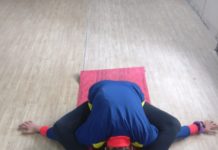Yoga is inspired by nature and things around us thus there are many asanas that are named or inspired by the features of an animal, mythological character and even things. One such asana is the Halasana. Hala means Plough in Hindi and Asana is the pose. Plough yoga pose is all about aligning your body like a plough that is used for farming. Just like the plough that strongly pierce the ground to bring the fertile soil up, Halasana also helps in giving a strong squeeze to the body (especially the upper body). This squeeze results in rejuvenation as the blood circulation increases in several areas of the body. Halasana is generally followed after Sarvangasana (read about it in my previous article).
It’s a therapeutic pose for people with back pain and blood pressure. In this yoga pose, the legs are stretched back behind the head in a lying down position. This creates high circulation of fluids inside the body, opening the blocked areas of neck, back and abdomen. The high circulation results in agility in the areas affected. This asana is also beneficial to women with menstruation disorders.
Let’s learn how to do the Halasana step-by-step
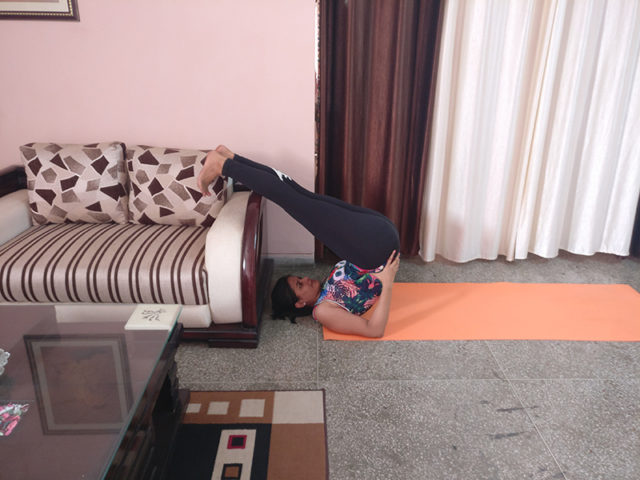 Lie down on your back with legs stretched out in front. Keep your palms near your thighs and breathe deep for few times focusing on your stomach and back. Doing so prepares the body parts to get ready for the asana.
Lie down on your back with legs stretched out in front. Keep your palms near your thighs and breathe deep for few times focusing on your stomach and back. Doing so prepares the body parts to get ready for the asana.
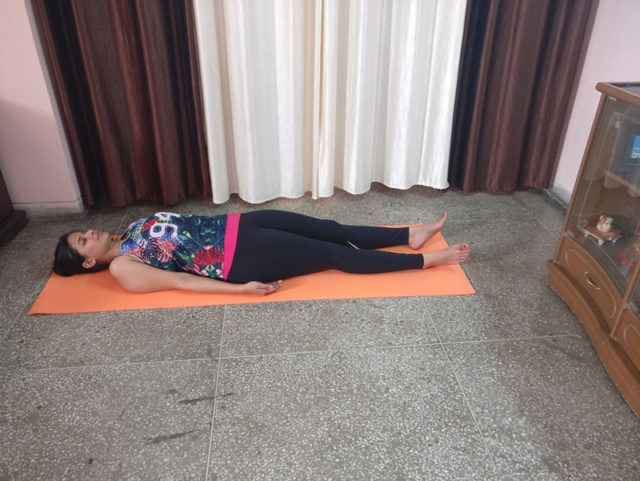
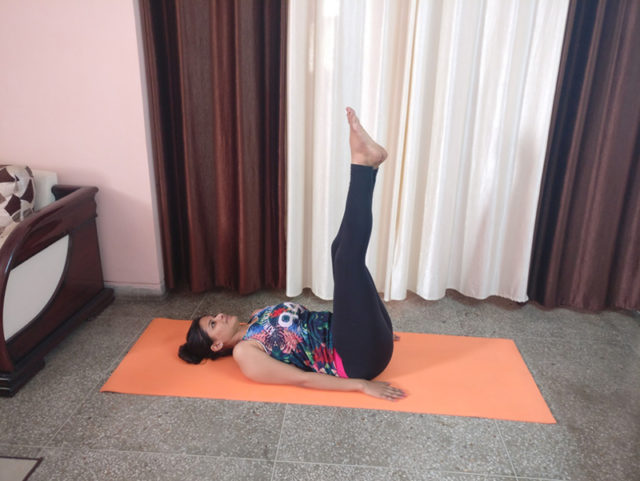 Now Exhale and raise the legs 90 degrees up (padottanasana). You can keep the hands below your hips to support your back in doing so. Generally due to weak back muscles, it difficult to raise the legs up easily, that’s why supporting the legs with the help of palms under the hips is advised.
Now Exhale and raise the legs 90 degrees up (padottanasana). You can keep the hands below your hips to support your back in doing so. Generally due to weak back muscles, it difficult to raise the legs up easily, that’s why supporting the legs with the help of palms under the hips is advised.
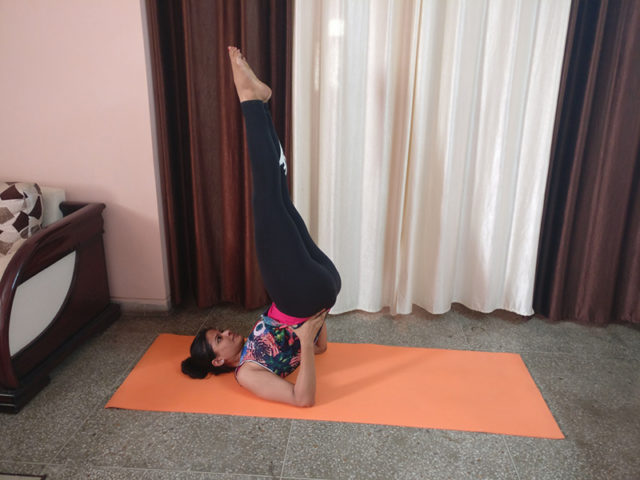 Inhale deep once and while exhaling deep, squeeze the abdomen in and raise your hips, lower and middle back by using an elbow stand as shown in the picture. This asana is called the sarvangasana.
Inhale deep once and while exhaling deep, squeeze the abdomen in and raise your hips, lower and middle back by using an elbow stand as shown in the picture. This asana is called the sarvangasana.
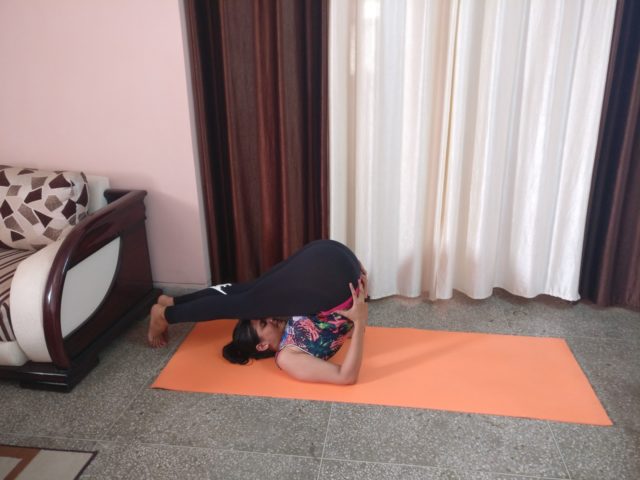 From Sarvangasana stretch your legs over and beyond the head and touch the toes on the floor. Keep the toes on the floor and make the legs stiff at the knees. Do it only when you are not susceptible to neck pain.
From Sarvangasana stretch your legs over and beyond the head and touch the toes on the floor. Keep the toes on the floor and make the legs stiff at the knees. Do it only when you are not susceptible to neck pain.
Also, if you have difficulty in keeping the toes on the floor, then place a pillow, stool or chair for support. This will not increase the fullness in the head which generally comes when the blood pressure is high. In the picture below you can see how different props like folded blanket, chair can be used to support legs to make the pose easier and yet effective.
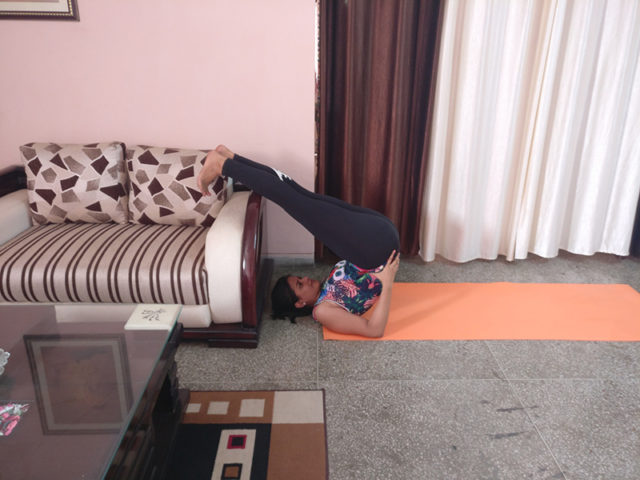
Extend the arms forward and interlock the fingers, keep them on the floor and stay in this position with normal breathing for as long as possible.
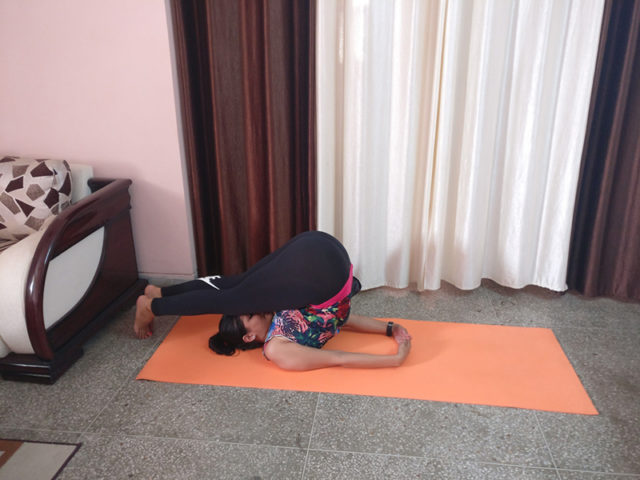
Throughout the asana, gaze at the tip of nose while your eyes closed.
To come back in the normal position, you can create an elbow stand supporting your lower back and come in to sarvangasana. After sarvangasana you can slowly keep your heels down and lie flat on the back in shavasana for some time.
HALASNA IS NOT ADVISABLE TO PEOPLE WHO HAVE:
- Diarrhea
- Neck injury
- Women at the time of periods
- Asthma
- High B.P (do only with the props/supporting your legs on a pillow)
- Pregnancy (you can do it only if you have prior experience in the pose)
BENEFITS OF HALASANA:
- Relaxes the brain
- Stimulates the abdominal organs and the thyroid gland
- Stretches the shoulders and spine
- Helps relieve the symptoms of menopause
- Reduces stress and fatigue
- Therapeutic for backache, headache, infertility, insomniaand sinusitis.






















